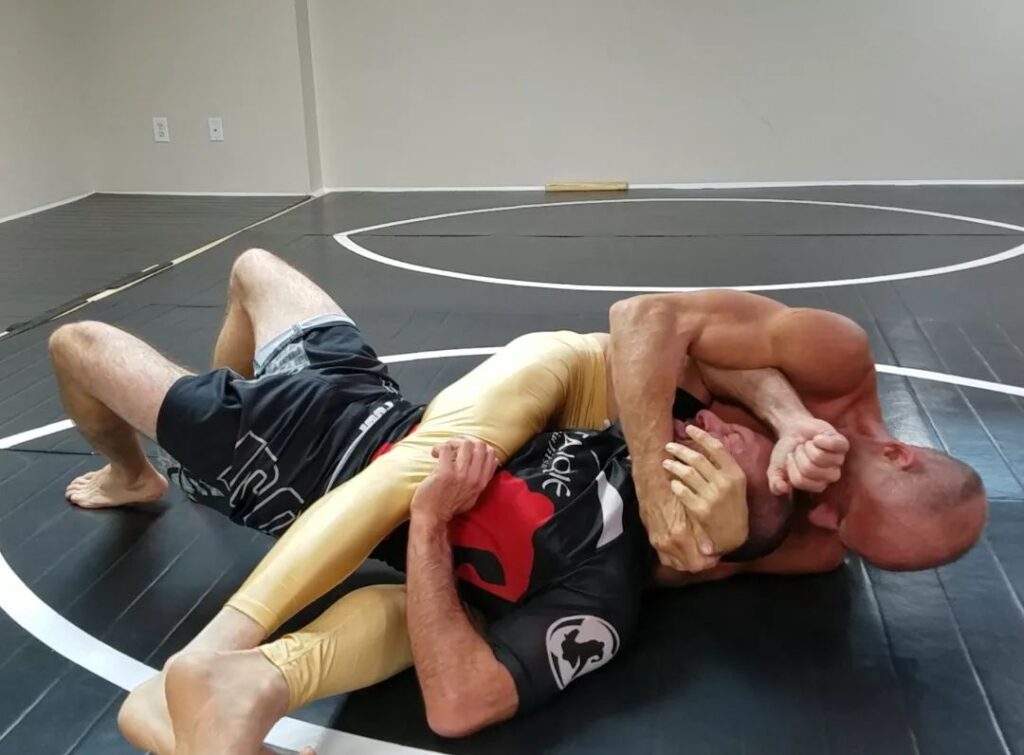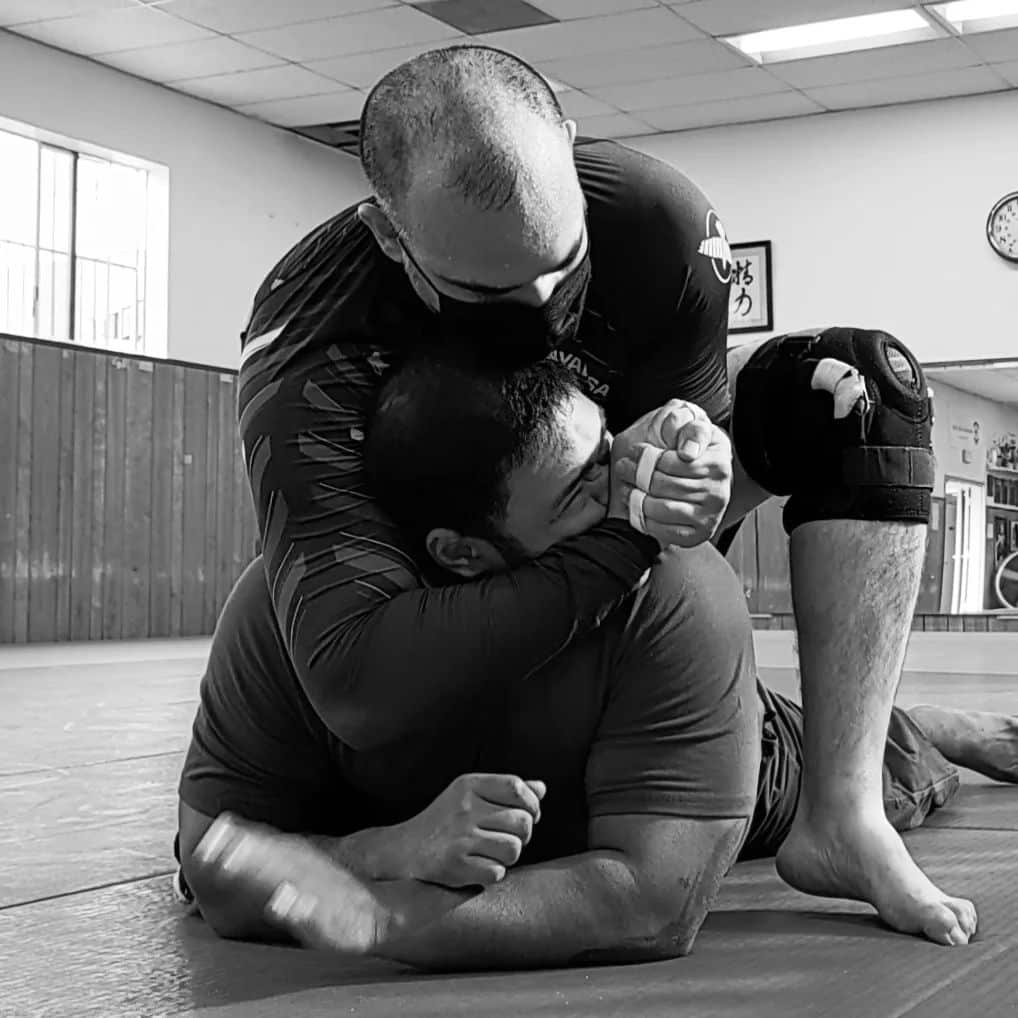Neck Crank Submission

The neck crank is a nasty submission that is absolutely miserable to get caught in. It’s a technique we don’t see often, but when you do, it makes headlines.
Here is everything you need to know about the neck crank submission. Going over different neck crank techniques and important Tips for locking it in.

Who Created the Neck Crank
Nobody can be created for inventing the neck crank as it’s been used ever since people have been grappling. In modern day fighting it is primarily used within catch wrestling and MMA.
No-Gi Jiu Jitsu gyms like 10th Planet Jiu Jitsu schools. It’s quite normal to see neck cranks used in MMA from the back.
One of the more famous neck cranks was when Khabib Nurmagomedov submitted Conor McGregor. At first, people thought it was an RNC, but Khabib had his arm over Conor’s chin.
He would apply immense force on Conor’s chin and neck to force the tap.
How Does the Neck Crank Work?
How a neck crank works is pretty straight forward. You isolate the head and neck of your opponent and force their head to move at an angle.
A human neck is not sturdy enough to withstand the force of a neck crank. If you keep applying pressure to your opponent’s neck, forcing it to an unnatural angle, they will eventually submit.
It’s not a submission you want to try and fight out of. Whenever you get put in a neck crank, always tap early to avoid any serious injuries.

The Legality of a Neck Crank
Within MMA, all neck crank submissions are allowed. Under most BJJ federations, forms of this submission are not allowed.
This also includes spinal locks. Although neck cranks are allowed under ADCC rule sets, they’re rarely used in competition.
The Can Opener Neck Crank
One of the simplest neck cranks to pull off is the can opener. A submission made famous by Mark Coleman, who used it during the 2000 Pride GP.
The submission is also one of the very few submissions that is done with an opponent’s guard.
Locking in the submission is pretty straightforward and is only done in two steps. In your opponent’s guard clinch their head with both hands and pull their chin to their chest.
When you pull the opponent’s head, do it with force to put more pressure on their neck.
The Twister
The submission made famous by Eddie Bravo called the twister is a mixture of neck crank and spinal lock. Here is the basic version of how to lock in the twister.
Let’s say you already have the back of your opponent. Take one leg hook out and triangle your legs to control one of your opponent’s legs which is called a lockdown.
Next control your opponent’s at their and dive your far arm under the controlled arm. After clearing the arm, take an S grip on your opponent’s head and pull it towards you.
Neck Crank From Back Control
The most common neck crank in MMA is from the back mount. When a fighter is attempting to lock in an RNC, their opponent will defend by tucking their chin.
Since neck cranks are legal in MMA, the fighter will then transfer to a neck crank. All they will do is connect their hands, put their forearm in the chin, and turn their head at an angle.
When the fighter puts on the neck crank, they use as much force as possible to force the tap.
Neck Crank From Side Control
Neck cranks are even open when you have side control on an opponent. Here is a simple neck crank setup from the position.
You’re holding a traditional side control with your chest on your opponent’s chest. There’s two different options to hit the neck crank.
The first option is to reach across your opponent’s body and palm their far arm with your inside arm. Next, your other arm slides under your opponent’s neck towards your arm and grab your wrist.
Or you can just slide your hand under your opponent’s head and control them at their armpit. Either setup you use, the finish is the same for both techniques.
Drive forward to force your opponent’s nose to touch their chin to get the submission.
Crucifix Neck Crank
The crucifix position offers great control and a lot of different finishing options. One of which is a nasty neck crank.
From the crucifix position, your legs are controlling one of your opponent’s arms and kimura control on the other. You’re going to switch the kimura grip to a deep hook on their arm.
Now that you’re in position, all you do is keep turning and drive forward to put on the pressure.
Catch Wrestling Neck Cranks
In catch wrestling, there are various nasty neck cranks that get taught within the martial art. Here is a wide variety of effective catch wrestling neck cranks that you can use.
Neck Crank From Turtle Position
The first catch wrestling neck crank that we’ll go over starts when your opponent is in turtle position. It’s very similar to the neck crank from the back mount.
Keeping on the side of your opponent, your arm goes across their chin and you take an S-grip. Your head then attaches to the back of your opponent’s head to close space and you crank.
To make it more miserable you can keep turning your opponent. Opening them up for you to take a figure four control on their leg and flatten them out on their stomach.
The Neck Snapper
The neck snapper neck crank setup starts with a chin control on your opponent with them on their knees. You initially try to hook their arm to turn them over, but they defend it.
Instead, you’re going to cup the back of their tricep and pull it up. This creates space between them and the mat that you’re going to put your head in and turn.
As you go through the gap, you’re going to use the chin control to force your opponent to turn with you. You’re going to keep turning until you come on top in side control.
To finish the crank, sit-through, and walk forward until your opponent submits.
The Scarf Hold Choke/Neck Crank
In an old Metamoris match, Josh Barnett submitted Dean Lister with a scarf hold choke/neck crank combination. Here is how to do this old catch wrestling technique.
When you’re in side control, you’re going to hold a scarf hold style side control. In BJJ/Judo, they call kesa gatame position.
To hold this type of side control, you need three points of control. Chest on chest connection along with controlling your opponent’s arm and head.
You’re also going to have to close the gap between your opponent’s head and your leg. To do that, bring your leg closer to their head, and grab your thigh with your hand under their head.
Next, push your opponent’s arm across their chest to put them in position for the choke/crank. Connect your hands with an S-grip and loop your hands to make the grip tighter.
To finish the submission, pull their head to their chest to lock in the pressure for the tap.
Important Tips for Locking in the Neck Crank
Neck cranks are pretty straightforward submissions, but there are a few important tips to remember. Here are tips to remember when locking in a neck crank.
- Head Control: You can’t put on a neck crank without proper head control. You may think you need to control the neck due to the submission name, but it’s always head control.
- Close Space: For all neck cranks, you have to close the space around your opponent’s head/neck. Any free space will allow them to escape the submission.
- Head To Chest: For neck cranks, where you force your opponent’ head down, aim to put their head to their chest.
- Use Force: There’s no other way to finish neck cranks than to put force behind it. Whichever neck crank you attempt, you must force immense pressure on your opponent’s neck.






